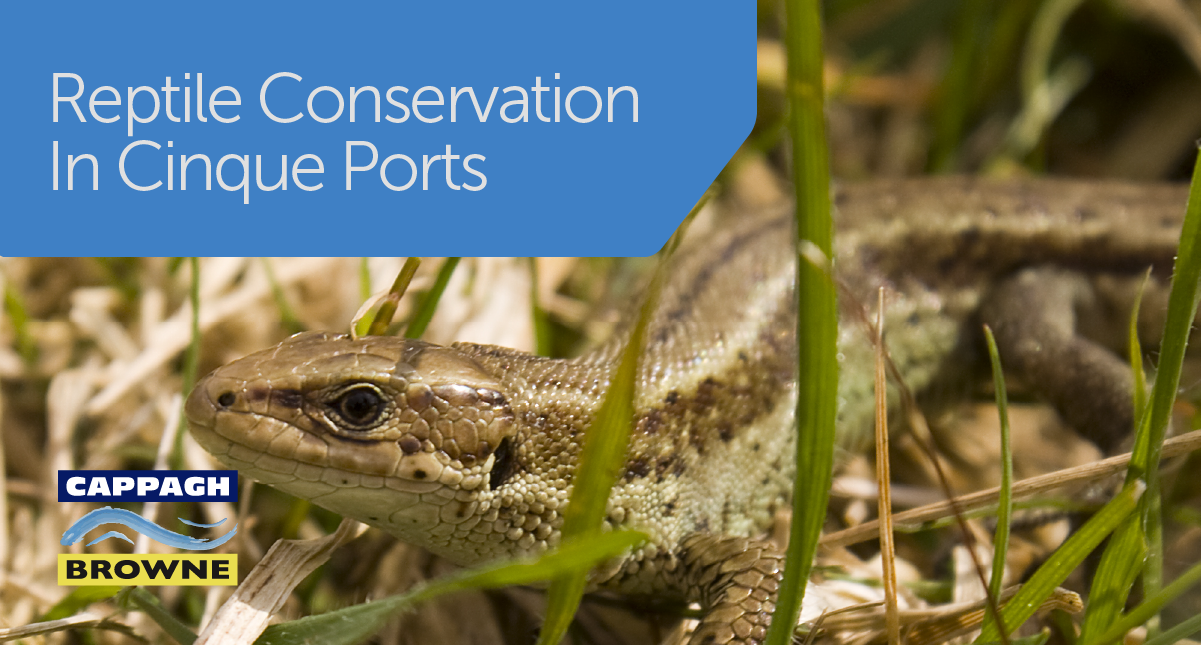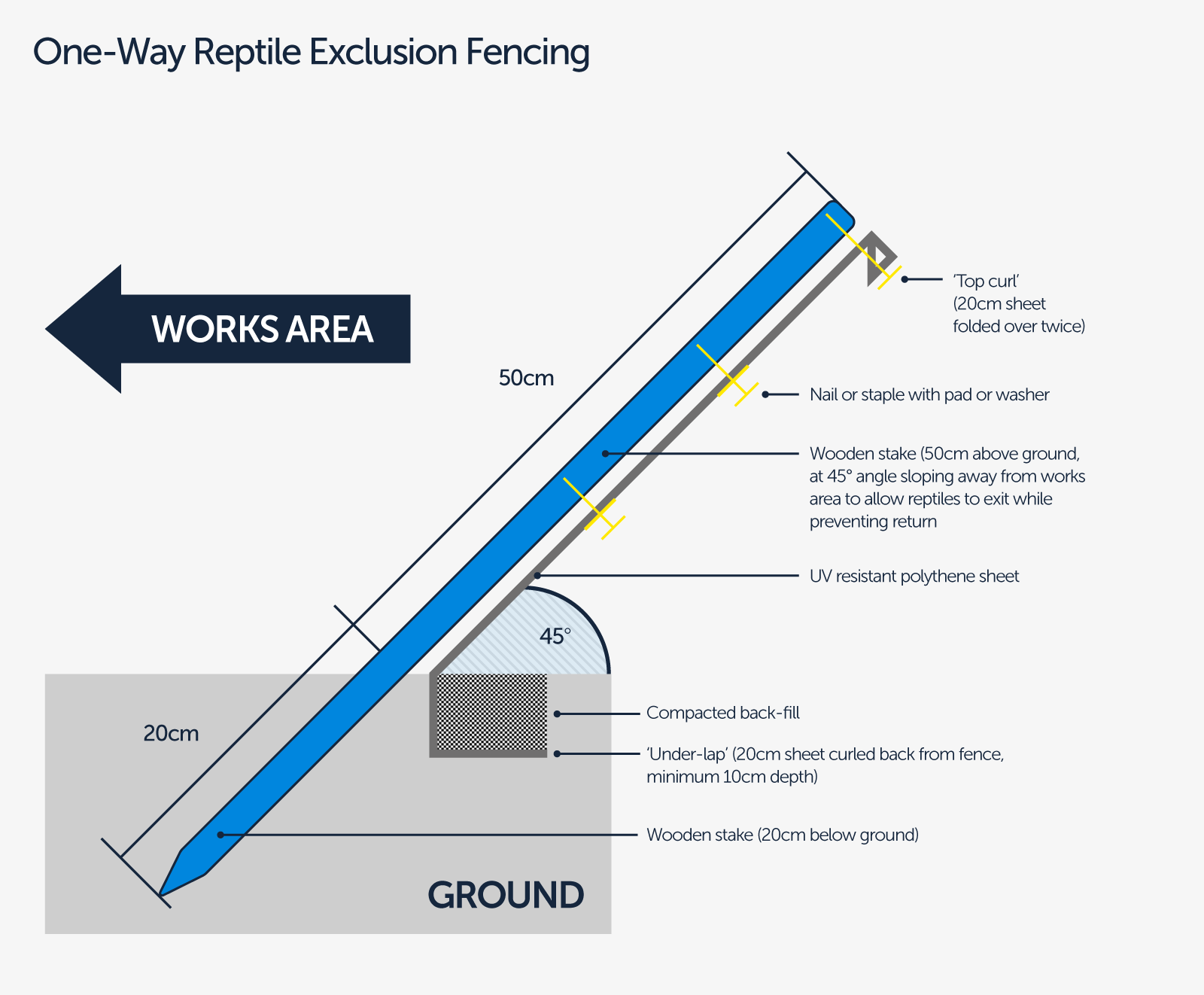
Almost a third of Great Britain’s reptile species are threatened with risk of extinction due to habitat loss and fragmentation. (1)
A Rich Habitat At Risk
The area of vegetation neighbouring the Cappagh Browne works site in Cinque Ports is teeming with reptile activity, home to a diverse array of species including slow worms, common lizards, and grass snakes. These reptiles, essential to the local ecosystem, are often seen basking in sunny spots, foraging for insects, and navigating the undergrowth. The dense vegetation provides them with ample shelter and food sources, creating an ideal environment for their survival and proliferation.
To safeguard these creatures during our operational activities, we are installing reptile fencing around the perimeter of our site. This comprehensive measure ensures that our work, such as plant movement and construction, does not pose a threat to the local reptile population. The fencing acts as a physical barrier, preventing reptiles from entering the construction zone where they might be injured or displaced. This not only shields the reptiles but also allows us to continue our work with minimal disruption to the local ecology.

Reptile Rights
All reptiles in the UK are protected under the Wildlife and Countryside Act 1981. This legal protection is crucial for maintaining biodiversity, as reptiles play significant roles in their ecosystems, such as controlling insect populations and serving as prey for larger predators. Protecting these species helps preserve the intricate balance of natural habitats and ensures the survival of these unique and often vulnerable creatures. The Wildlife and Countryside Act is a significant piece of legislation that aims to prevent further decline in reptile populations, promote conservation efforts, and enhance public awareness about the importance of safeguarding these vital components of the UK’s natural heritage.
Championing Conservation
Proactive steps to implement mitigation measures is essential for upholding our commitment to environmental stewardship. Tristen Parker, Environmental Advisor at Cappagh Browne, reflected on this survey: “After reptile activity was identified through a reptile survey, we have installed appropriate mitigation to protect reptile activity in the area. It was agreed with ecologists to install reptile fencing along the perimeter of the works to ensure the reptiles stay within the vegetated area and don’t encroach the works area.”
Environmental Compliance
Environmental compliance is a cornerstone of our operations at Cappagh Browne. By installing reptile fencing, we lessen the impact of our essential infrastructure work on the surrounding environment whilst practicing responsible construction mitigation methods.
(1)
https://www.endsreport.com/article/1724769/third-great-britains-amphibians-reptiles-at-risk-e
xtinction
